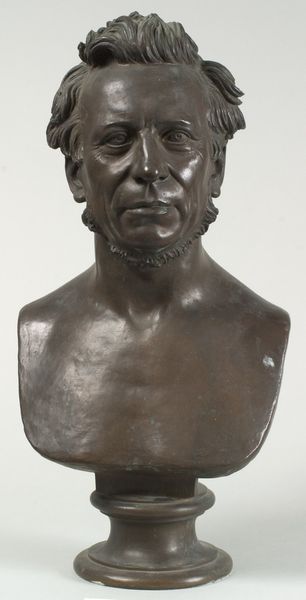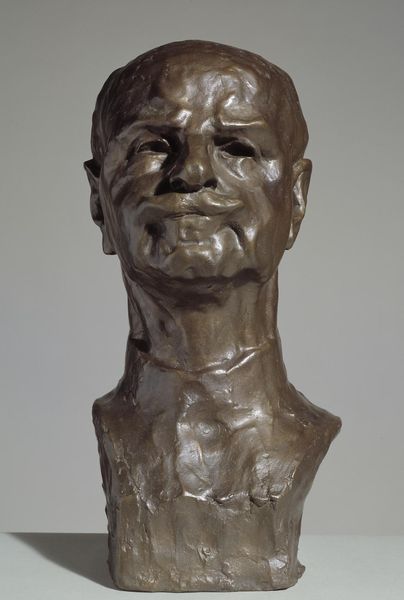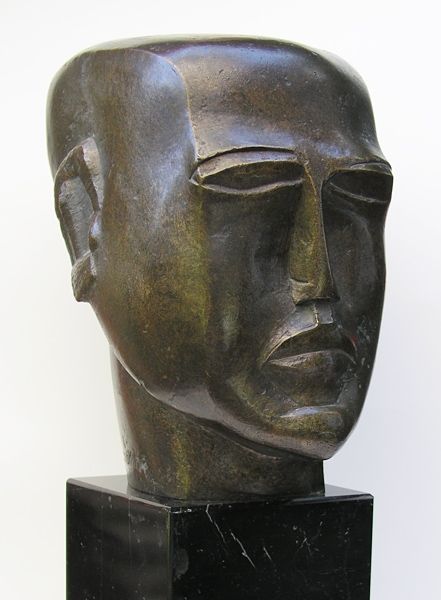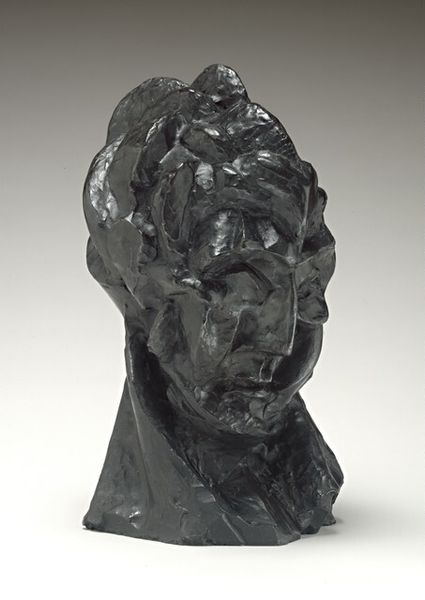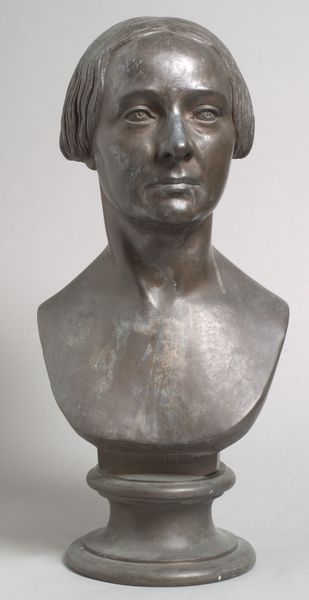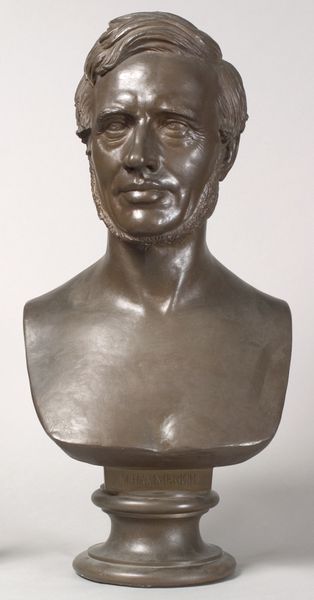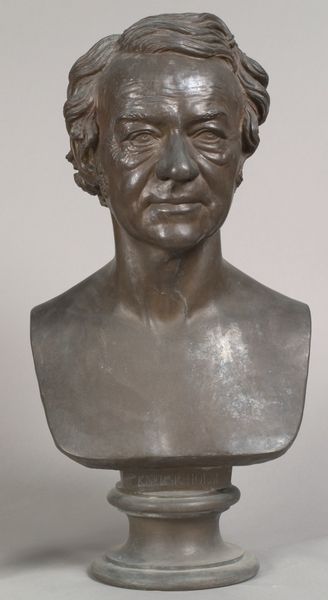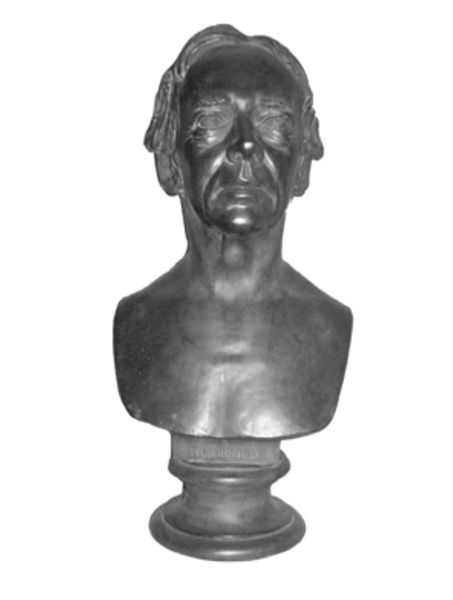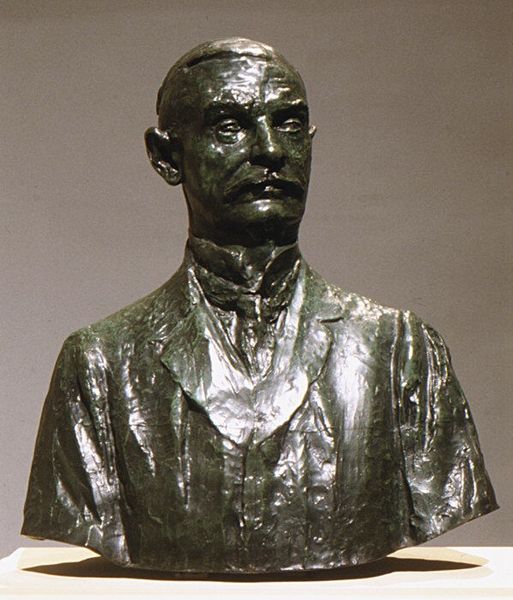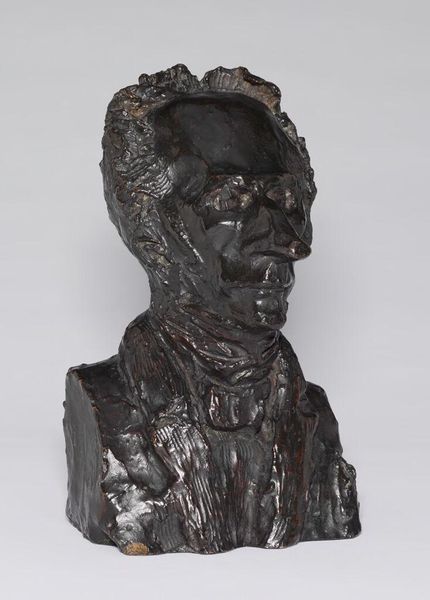
Dimensions: object: 694 x 515 x 345 mm, 51.5 kg
Copyright: CC-BY-NC-ND 4.0 DEED, Photo: Tate
Editor: This is Henri Gaudier-Brzeska's bronze bust of Horace Brodzky, currently residing at Tate Britain. The rough texture and tilted gaze give it such a dynamic feel. What formal qualities strike you most? Curator: The composition relies heavily on the interplay of planes. Note how Gaudier-Brzeska employs angular facets to define form, almost cubist in its reduction. The treatment of the neck, for example, is far from naturalistic. Editor: It’s as if he’s abstracting reality through those planes. Curator: Precisely. The material itself, the bronze, is crucial. Its patination and texture contribute to the overall impact. What do you observe regarding its surface treatment? Editor: I see how the light plays off the rough texture, adding depth and highlighting the angular forms. It gives a sense of unfinished energy. Curator: An astute observation. These elements coalesce to create a powerful, almost primitive aesthetic. Editor: That makes sense. I’ve gained a new appreciation for how form and material work together here. Curator: And that is the essence of formal analysis.
Comments
tatebritain 7 months ago
⋮
http://www.tate.org.uk/art/artworks/gaudier-brzeska-horace-brodzky-t00129
Join the conversation
Join millions of artists and users on Artera today and experience the ultimate creative platform.
tatebritain 7 months ago
⋮
Life in London was difficult at first for the new couple. Gaudier-Brzeska struggled to make ends meet, and they endured periods of extreme poverty. By 1913, however, GaudierBrzeska had managed to secure his own studio and a growing network of artistic and literary friends. Among these was Horace Brodzky, an Australian artist and critic. Gaudier-Brzeska sculpted this portrait of his new friend from life, exaggerating the angles and planes. According to Brodzky, the small drawings etched into the chest were added by Gaudier-Brzeska on a whim, revealing his playful and often unpredictable temperament. Gallery label, September 2024
